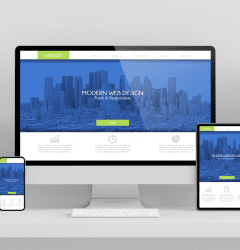This website uses cookies so that we can provide you with the best user experience possible. Cookie information is stored in your browser and performs functions such as recognising you when you return to our website and helping our team to understand which sections of the website you find most interesting and useful.
- Email: growth@growisto.com
- Phone: +1 628-280-9076
22 Aug

How Can Headless Commerce Improve User Experience and Conversions?
Technology changes fast, and to stay relevant, it’s necessary to keep a tap on what others are doing. This is especially true for E-commerce brands. In current times, as digitization comes to the fore, most of the shopping occurs outside the website – over mobile, social media, and so on. Thus, e-commerce platforms have to continuously update themselves on these customer touchpoints to offer their customers more personalized and omnichannel experiences. For this purpose, many companies like Shopify, Adobe, Commerce Tools, and many more are moving towards Headless commerce architecture for their platforms. This is not surprising, considering the fact that these top brands have received positive results from their migration to the headless system.
In this week’s newsletter, we are going to discuss how headless systems can help you enhance your customer journey and, consequently, improve conversions:
- Offers Faster Speed: In traditional e-commerce, the front-end and backend are coupled together, which can ultimately hurt site speed and performance. Headless commerce detaches the presentation layer (front-end), from the commerce functionality and background process layer (back-end). This means that the content that people see loads faster and gives them a more seamless experience altogether. Studies show that improving loading time by just 0.1s can improve conversion rates by almost 8%. Therefore, adopting headless commerce will fasten up your website and increase your conversion rate.
For one of our clients, who is a leading manufacturer of safety signs and labels in the US, we developed a decoupled system with Magento backend & ReactJS frontend. This customized headless system helped them increase their conversions by 25%.
- Leverage More Flexibility: Traditional monolithic architecture was built when business requirements were standardized and relatively static, for which monolith solutions were a good fit. Making regular changes within a traditional platform is easier. However, any complex change is difficult to implement as it requires extensive back-end and front-end coding which can be a difficult task for the developers.
However, the decoupled architecture of headless commerce software tools makes it quick and easy to customize the website according to the tastes of the consumers. You can easily implement a lot of customization, which was not possible earlier or seemed very hard.
Also, making changes and updating is a far less time-consuming task for headless commerce websites. Many front-end changes you need can be made in the front end without the developers having to change the back-end coding, which makes this system more flexible. Just keep in mind that out-of-the-box platform plugins cannot be used as it is, for those we need to build the front-end part.
For example, British company ASOS was able to introduce a newer feature called the “Style Feed” after migrating to headless commerce. Style Feed is a section where shoppers can get outfit ideas, editor picks, styling inspiration, and more. Overall, the brand could provide a faster and more engaging experience thanks to the Headless approach.
- Create Omnichannel Experiences: The buyer journey is becoming increasingly more complex. Data shows that almost 74% customers use multiple channels to initiate and complete transactions. Moreover, over 76% buyers choose different eCommerce channels, depending on the context.Hence, every device and touchpoint needs a similar visual and flow to keep the users interested throughout the purchase journey.
With monolith architecture, synchronizing and personalizing these digital touchpoints to provide a comprehensive omnichannel approach is a mammoth task. It is more or less limited to its default framework.
With headless commerce, we can create similar interactions at different touchpoints with the same backend and give customers the same seamless experience, whether it is Website, Mobile Web, Mobile App, POS, Kiosk, etc. If customers navigate from one channel to another, they will be able to have the same experience and feel everywhere.
Moreover, the development and maintenance cost of multiple channels reduces drastically as the backend remains the same and we can even re-use some parts of the frontend.
For example, Target discovered that nearly 80% of their customers began their buyer journey on one channel and finished it on another. The brand saw a huge opportunity for growth by bridging this channel gap and implementing a headless commerce architecture to unify the buyer journey across multiple channels. Following the implementation, Target saw an increase in its online conversion rates, as more users found it relatively easier to complete their purchases.
- Improve Customer Experience and Personalization: The wants and needs of the customers are constantly evolving. Customers these days want to have a personalized experience even while shopping. This includes features like customized shopping preferences, recommendations, and promotions that are personalized for the customer based on their previous purchasing history. For example, Pandora could offer relevant product suggestions based on what a shopper has already looked at. As a result of switching to headless systems, the brand was able to make the customer’s shopping journey fast and more streamlined by improving the vital stages in their journey (like browsing experience, product searching, and purchasing). This resulted in a vastly improved user experience and increased customer satisfaction.
A traditional eCommerce system is usually limited to its default framework. It doesn’t allow you to personalize or customize your website to a larger extent. With so much manual editing involved, it becomes difficult to adjust the content according to the preferences of the customers.
However, a headless architecture ensures that you have the option of tuning the front end of the website to match the taste of the customer. This creates a stronger and more special bond between you and your customers.
Moreover, an additional advantage of headless commerce is improved security. Due to the headless architecture, your backend server and admin portal endpoint itself is not known to the outside user. Therefore, it is less prone to attack. Also, the same can be restricted to be accessed from office IP only, making it even safer.
In 2021, e-commerce accounted for nearly 20 percent of retail sales worldwide. Forecasts indicate that by 2025, the online segment will make up close to a quarter of total global retail sales. With this increase, it has become important for brands to offer a tailored, smooth, and customized experience that suits customers’ personal tastes and needs. Headless commerce is a step in the right direction as it enables brands and retailers to give their customers a seamless experience unbothered by the restraints of channels. No matter what device your customer is using, with headless, you will be able to give them a seamless experience everywhere.
Want to provide a seamless experience to customers and boost sales by switching to headless commerce? Hit reply and let’s chat.
Related Post
Industries Served
United States
India








